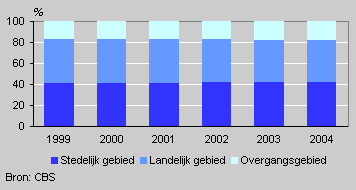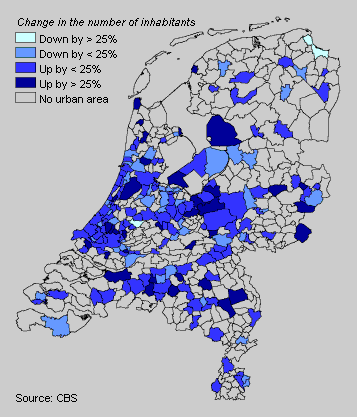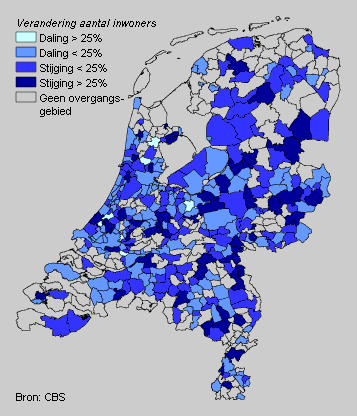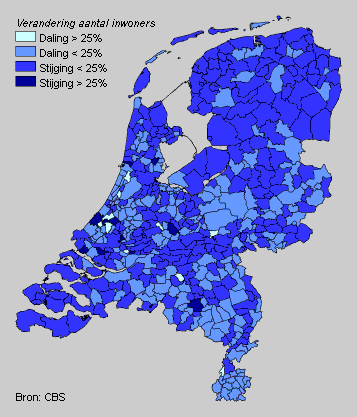Urban population outnumbers rural population

Since 2002 more people in the Netherlands are living in urban than in rural areas. In the province of North Holland the number of addresses per km2 averages 3,085. With an average 693 inhabitants per km2, Drenthe is the most sparsely populated province in the Netherlands.
Inhabitants by urban area

The population in urban areas increases annually in the period 1999–2004. The Dutch population living in urban areas grew from 40.7 percent in 1999 to 41.6 percent in 2004. The population in rural areas decreased over the same period from 41.9 to 40.6 percent. The population living in transitional areas (neither urban nor rural) grew marginally from 17.4 percent in 1999 to 17.8 percent in 2004. Although North Holland is the most densely populated province, the average number of addresses per km2 fell slightly between 1999 and 2004.
Increase by expansion
Only 5 percent of the population increase in urban and transitional areas comes from growth within the existing area; 95 percent is the result of territorial expansion, mainly on the outskirts of residential areas.
Population growth in the provinces of Gelderland and North Brabant
Absolute population growth in urban areas is mainly found in the provinces of North and South Holland where the population rate in urban areas is already high. In South Holland 66 in every 100 inhabitants lived in urban areas in 2004, in Drenthe only 7 in every 100 inhabitants.
The most rapid relative growth rate in urban areas is found in the province of Flevoland, particularly in the town of Almere. The relative population growth rate is also striking in the urban areas of Gelderland and North Brabant. In the rural areas in the provinces of Limburg and South Holland the population is obviously dwindling.
Population in urban areas

Population in transitional areas

Population in rural areas

Niek van Leeuwen